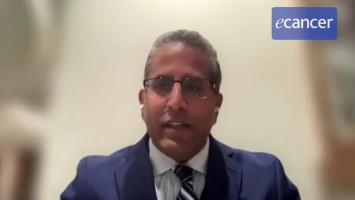This study was testing a new paradigm for the treatment of glioblastoma, an incurable brain tumour, where instead of using large margins and doing a single radiation plan, we used an MR-Linac, which is a machine that can do MRIs every day, just before radiation, to reduce the margin that we treat and to adapt as the tumour evolves over three or six weeks of radiation with chemotherapy.
What was the study design?
The study design was it’s a phase II single-arm study with two cohorts. Again, three or six weeks of radiation and all patients were treated with this new approach where they were treated with adaptive radiation on an MR-Linac. The primary outcome was to look at the risk of marginal failure because when we reduce margins we worry that there’s a chance that the margins are too small and the tumour will start regrowing at the edge of where we treated because we’re smaller than the historical margins that are used. So the study was testing the safety of this approach to lead to more trials down the road that may test how much better it is in terms of toxicity.
What were the results of this study?
The results were quite encouraging. Overall we were testing against a historical rate of marginal failure where tumour regrows at the edge of the radiation volume of 11% in other studies with standard margins. In fact, in our study the risk of marginal failure was only 4% so it was deemed non-inferior and therefore safe. We also looked at outcomes like progression free survival and overall survival compared to recent contemporary historical controls and, again, there was no detriment in terms of outcomes like PFS and OS.
What do you think the clinical impact of these results will be?
I think it’s really going to open up the doors for us and other centres to keep pushing forward with this approach. Adaptive radiation is one of the new things and now that the technology has caught up to what we want to do, which is really personalised radiation even more where we can personalise the treatment to tumours as they move or as they change or as they grow, as they shrink. So it’s encouraging for us as we’re already continuing additional trials and other centres hopefully will also start testing out this method to really define what the true clinical benefits are which we believe are there and are real. But the safety signal in this study is the first step needed to encourage other places to start trying this approach.








